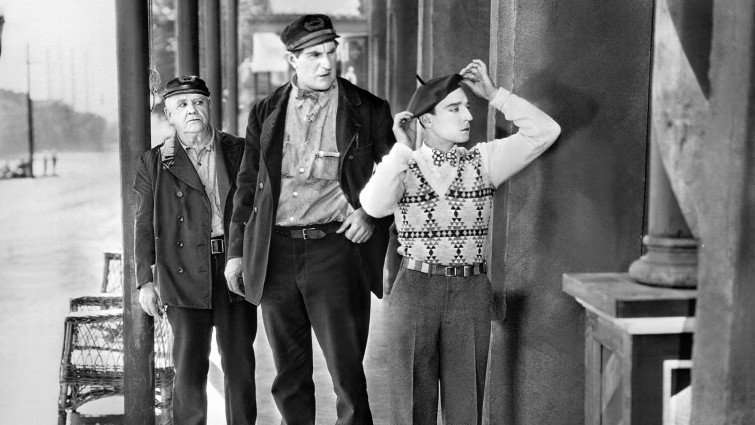

Member review

Steamboat Bill, Jr.
Silent comedy starring Buster Keaton as the son of a steamboat captain who tries to teach him his trade, without much luck...
Certificate
Duration66 mins
Review by
- Oliver, 17
- 40 reviews
Review by Oliver, 17
Buster Keaton is perhaps for many the only other silent film actor they are aware of. Something I learned when I read Roger Ebert’s review of “Steamboat Bill, Jr.” was that Keaton found himself not making the movies he really wanted when he eventually went on to join MGM during the start of the “talkie” age. Previously, Keaton was apparently meticulous with his work. He would repeat a scene over and over again as he saw fit, until he eventually got the effect he wanted. When he lost that control, he began to dislike his hand in the industry. “Steamboat Bill, Jr.” came out one year after 1927’s “The Jazz Singer” which was the very first talkie. Perhaps then Keaton deserves credit for creating such an incredible film and, in terms of quality, defying everything “The Jazz Singer” had to offer film at the time.
“Steamboat Bill, Jr.” concerns Steamboat Bill’s (Ernest Torrence) rivalry with opposing Steamboat captain King J.J King (Tom McGuire). Steamboat Bill’s son (Buster Keaton) is arriving to see his Father, something that hasn’t happened since he was a baby. Bill Jr. arrives and distresses his father only to then find Kitty King (Marion Byron) and set his sights on winning her heart. Steamboat King and Steamboat Bill may be rivals but they agree on one thing: Bill Jr. and Kitty won’t be spending one minute together if they can help it. It shows influence from “Romeo and Juliet” but doesn’t ever really feel like a soppy love story filled with angst. Just a scenario in which Keaton, floundering in front of the apple of his eye, is far more amusing than otherwise.
Comedy was Keaton’s game. Charlie Chaplin did go on to produce more thoughtful pieces such as “The Great Dictator” in 1940, but Keaton stayed with his mastery of comedy. When I say mastery, I mean it, “Steamboat Bill, Jr.” is a pleasure to watch and that’s because it is almost always hilarious. There is one scene where Keaton trips up and falls over in a way that a break dancer could only dream of in their scripted routines. Rowan Atkinson and Jim Carrey may be the men with the rubber faces, but Keaton is the man with the rubber body. It’s incredible what he can do especially when considering the fact that he performed all of his own stunts, as well as supposedly some of his actors stunts as well. Something I saw in “Battleship Potemkin” was the musical score being used to portray the sound in certain instances where it would benefit the scene. “Steamboat Bill, Jr.” also does this but to a greater extent and to a much greater comic effect. It accompanies the score, which is an essential part of the silent film genre, perfectly and the score itself is wonderfully upbeat and vivid.
With all of it’s hilarity and brilliant storytelling, “Steamboat Bill, Jr.” is one of the best comedies you’ll ever see but it never rises above that I feel. In the end, it accomplishes more for our funny bones than our brains, and I wouldn’t change it for the world
(Originally published at http://moviemoore.wordpress.com/ July 13, 2014)